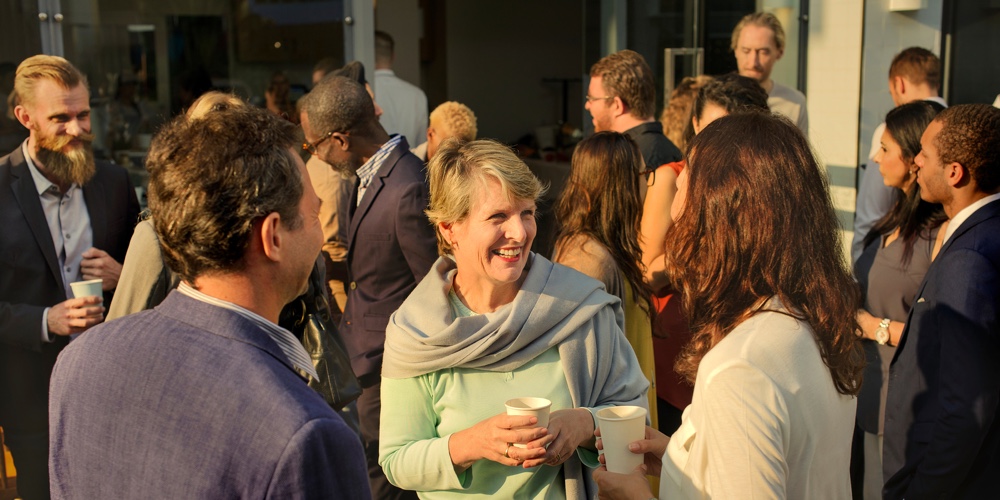People need people: The bridge of connection

I recently moved my family across the country for a job change. Throughout my career, as I shaped a path toward my current role, I accepted positions in different parts of the country, so moving is not new. However, as with many hard things, I tend to pack relocation details deep into my memory’s basement. As we recently unpacked that box, it was like opening a junk drawer at the last minute to dash through the final stages of exiting a home. Sharp objects poked, tangled wires confused, and just looking at the disarray caused butterflies in my stomach.
One of the toughest challenges in this move was watching my daughter MacKenzie. She’s nearly 12 and going into the sixth grade. Her response to my exploration of this new role was pure support. As the reality of the move came to life her support remained undaunted, and her sadness about leaving friends, anxiety about a new school, and her readiness for the less structured summer to end grew. She craved connection. While her family rallied around her, her adolescent growth yearned for the imperative role that friends play.
And friendships matter deeply in the workplace. In the August 2022 article entitled, “The Increasing Importance of a Best Friend at Work,” authors Patel and Plowman state, “Having a best friend at work is strongly linked to business outcomes, including profitability, safety, inventory control and retention.” These connections that we feel impact motivation, build engagement and can make navigating challenges easier.
During my early days at Community Financial Credit Union, I have invested time with all of our more than 300 team members, and I am building mechanisms to keep that connection flowing. As I arrived the team had many concerns about my approach, what I might change that could impact their lives, and if I would continue to prioritize our members and team the way my predecessor had.
Beyond meetings with direct reports and time spent in my first two weeks with our executive team (eTeam) to develop our co-created leadership charter, I invited the leadership team to set meetings with all the members of their team. I also scheduled dinners with each of the branches. Some of the sessions were filled with conversation and questions. Others were quiet as people watched to see if they could safely engage with this new person they did not know.
In Filene Research Institute’s report, “The Effect of Transformational Leadership at Credit Unions,” Colbert, Kristof-Brown and Barrick codify how putting people first can ensure even more impact through cooperative finance. The authors share that transformational leaders demonstrate four types of behavior, including:
- “They serve as ideal examples” by exhibiting the behaviors they expect.
- Communicating “a compelling vision of the future” and sharing how team members can be a part of that vision.
- Providing a safe environment that invites creativity and innovation.
- Treating team members “as individuals and supporting their personal and professional development.”
Most importantly, the “results add to a body of research that finds that transformational leadership motivates individual followers, generates a satisfying work environment, facilitates team interactions, and improves financial performance.”
All four of these types of behaviors require a foundation of relationship building. During each dinner, through each meeting, in quick hallway and zoom conversations, and as I grill pizza for the team in the parking lot, our team is getting to know me, we are learning one another’s communication styles and cues, and together we are building trust. They are starting to see me as a human, not a title on a business card with authority. One of the recurring comments in each engagement was, “Thank you for doing this. It was nice to meet you, and it was really nice to see folks I hadn’t in a long time.” People crave connection and it creates positive outcomes.
As we move forward, changes will accelerate. Divergent opinions will emerge. Challenges will arise. The time we spent together early on will be the building block of our shared cushions. We have made an evergreen commitment to an intimate conversation with me and six different people across the organization monthly, called “Six Impossible Things with T.” This effort will continue to invite people to share and believe that sharing matters. The recognition that social time has a business value will become a part of our culture and who we are.
MacKenzie had her first day of school on the day after Labor Day. The night before, her concerns about not making friends, “doing something stupid,” and not finding her classrooms escalated. She spent a restless night without much sleep and the big day came. She enthusiastically headed to the bus. Day one did not bring instant friends. She met a couple of classmates that shared similar schedules. She started to build a relationship with a teacher. And, the night before day two was a little easier.
I reminded her that it was hard when we moved from Wisconsin to Colorado and how sure she was then that she would never make friends. Now she has friends in Wisconsin and Colorado, and soon she’ll have relationships in Michigan. Waiting for that to emerge and the calm ease that connection helps create is excruciating. It’s hard because we miss how good it feels when we have it. As leaders, we can create a space of joyful synergies that will help our team members feel a lifetime of connection and ensure our members experience even more impact. Growing trust is hard and it mandates shared experiences connecting us. Building that bridge starts with us. Who might you connect with today?

